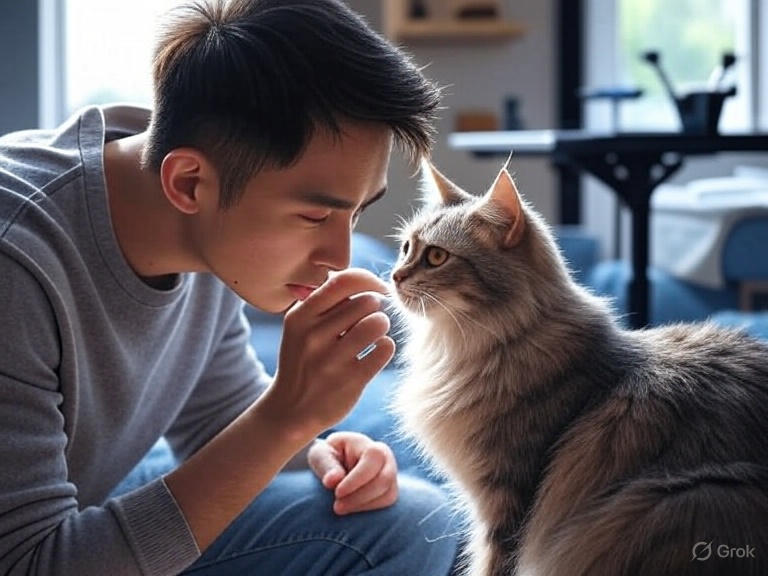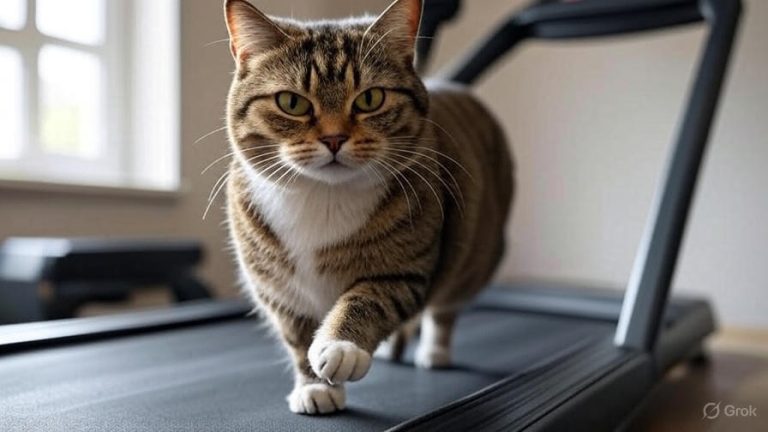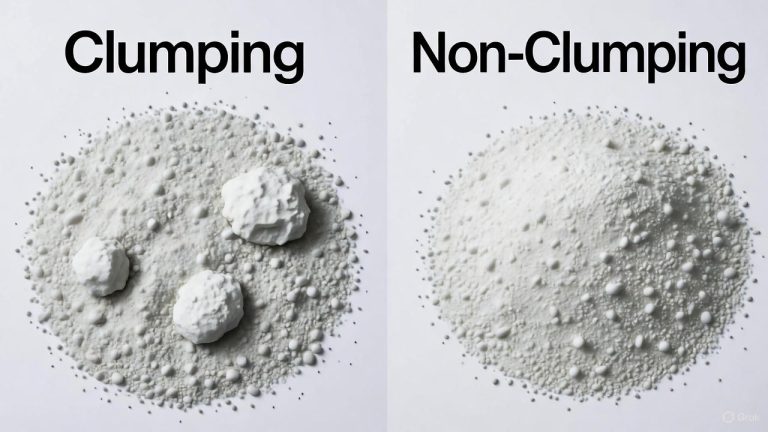How to Clean Your Cat’s Eyes?
Your cat’s bright, alert eyes capture your heart every day. Those mesmerizing orbs deserve the best care you can provide. Proper eye hygiene keeps your feline friend comfortable and prevents serious health issues down the road.
Many cat owners overlook this crucial aspect of pet care. They focus on feeding, grooming fur, and cleaning litter boxes while neglecting their cat’s delicate eye area. Regular eye maintenance prevents infections, removes debris, and helps you spot potential problems early.
Why Cat Eye Care Matters
Cats naturally produce eye discharge throughout the day. This normal secretion helps protect their eyes from dust, pollen, and other airborne particles. However, excessive discharge signals underlying issues that need immediate attention.
Indoor cats face different challenges than outdoor felines. Dust mites, air fresheners, and household chemicals can irritate sensitive eye tissues. Outdoor cats encounter plant matter, dirt, and seasonal allergens that cause eye problems.
Certain cat breeds require extra attention. Persian cats, Himalayans, and other flat-faced breeds have shallow eye sockets that make them prone to tear staining and discharge buildup. Their facial structure prevents natural drainage, creating perfect conditions for bacteria growth.
Senior cats develop age-related eye conditions that benefit from regular cleaning. Arthritis makes self-grooming difficult, so older felines rely on their owners for thorough eye care. Early intervention prevents minor issues from becoming major health concerns.
Recognizing Normal vs. Abnormal Eye Discharge
Healthy cat eyes produce minimal clear or slightly cloudy discharge. This normal secretion appears in small amounts at the inner corners of the eyes, especially after sleeping. The discharge dries into tiny crusty bits that you can easily remove.
Watch for warning signs that indicate veterinary attention. Thick, colored discharge suggests bacterial infections. Green or yellow secretions require immediate professional treatment. Blood-tinged discharge points to injuries or serious underlying conditions.
Excessive tearing creates wet fur around the eyes. This constant moisture promotes bacterial growth and causes painful skin irritation. The damp environment becomes a breeding ground for harmful microorganisms that threaten your cat’s health.
Swollen, red, or irritated eye tissues signal inflammation. Your cat might paw at their eyes, squint frequently, or avoid bright lights. These symptoms accompany various eye conditions that need prompt medical evaluation.
Essential Supplies for Cat Eye Cleaning
Gather the right materials before attempting to clean your cat’s eyes. Soft cotton balls work better than cotton swabs, which can accidentally poke delicate eye tissues. Purchase sterile cotton pads from pet stores or pharmacies for the safest results.
Saline solution designed for contact lens cleaning provides gentle, effective cleansing. Avoid products containing preservatives or additives that might irritate your cat’s eyes. Plain sterile saline from the pharmacy works perfectly for routine cleaning.
Warm water serves as an alternative when saline isn’t available. Boil tap water and let it cool to room temperature before use. This process removes chlorine and other chemicals that could cause eye irritation.
Specialized pet eye wipes offer convenience for busy owners. These pre-moistened cloths contain gentle cleansing agents formulated specifically for animal use. Keep them handy for quick cleanups between thorough cleaning sessions.
Soft towels help restrain anxious cats during the cleaning process. Choose towels with minimal lint that won’t leave fibers around your cat’s eyes. Clean towels prevent cross-contamination between different areas of your pet’s body.
Step-by-Step Eye Cleaning Process
Start by creating a calm environment for your cat. Dim bright lights that might cause squinting or discomfort. Choose a quiet room away from other pets or household distractions. Your relaxed demeanor helps keep your cat cooperative throughout the process.
Position your cat comfortably on your lap or a stable surface. Gently wrap anxious cats in a soft towel, leaving only their head exposed. This “purrito” technique prevents scratching while keeping your feline secure and comfortable.
Examine both eyes carefully before beginning the cleaning process. Look for obvious injuries, foreign objects, or signs of infection. Document any unusual findings to discuss with your veterinarian during regular checkups.
Saturate a cotton ball with saline solution or warm water. Squeeze out excess liquid to prevent dripping into your cat’s eyes. The cotton should be damp but not soaking wet for optimal cleaning results.
Start cleaning from the inner corner of the eye, moving outward toward the ear. This technique prevents pushing debris further into the eye socket. Use gentle, sweeping motions rather than harsh scrubbing that could damage delicate tissues.
Use a fresh cotton ball for each eye to prevent spreading bacteria or infections between eyes. Cross-contamination leads to secondary infections that complicate treatment and recovery. This simple precaution protects your cat’s health.
Remove dried discharge by softening it first with damp cotton. Hold the moistened cotton against stubborn crusts for several seconds before gently wiping away. Patience prevents tearing delicate skin around your cat’s eyes.
Clean the surrounding fur that shows staining or dampness. Eye discharge often spreads to nearby hair, creating unsightly discoloration. Regular cleaning prevents permanent staining and keeps your cat looking their best.
Dealing with Resistant Cats
Some cats resist eye cleaning despite your best efforts. These felines require special techniques to make the process less stressful for everyone involved. Patience and consistency eventually win over even the most stubborn cats.
Start with brief handling sessions when your cat feels relaxed. Touch their face gently for just a few seconds, then offer treats and praise. Gradually increase the handling time as your cat becomes more comfortable with face touching.
Enlist a helper for particularly difficult cats. One person holds and comforts the cat while the other performs the cleaning. This teamwork approach reduces stress and makes the process safer for both you and your pet.
Try different positions until you find what works best. Some cats prefer sitting on their owner’s lap, while others feel more secure on a table or counter. Respect your cat’s preferences to make future cleanings easier.
Consider wrapping uncooperative cats in a towel or blanket. This gentle restraint technique, called “purrito wrapping,” prevents scratching while making cats feel secure. Leave the head exposed for easy access to the eyes.
Break the cleaning process into shorter sessions if needed. Clean one eye today and the other tomorrow if your cat becomes too stressed. Consistent, brief sessions work better than lengthy, stressful encounters.
Common Eye Problems in Cats
Conjunctivitis ranks as the most frequent feline eye condition. This inflammation of the inner eyelid causes redness, swelling, and discharge. Bacterial, viral, or allergic reactions trigger this uncomfortable condition that requires veterinary treatment.
Upper respiratory infections often affect the eyes simultaneously. Cats with cold-like symptoms frequently develop eye discharge and irritation. These infections spread easily between cats, especially in multi-pet households or shelters.
Corneal scratches result from fights, accidents, or foreign objects in the eye. These painful injuries cause squinting, tearing, and sensitivity to light. Prompt veterinary care prevents complications that could lead to vision loss.
Blocked tear ducts create constant wetness around the eyes. This condition particularly affects flat-faced breeds with abnormal facial anatomy. Surgical intervention sometimes becomes necessary to restore proper drainage.
Allergies cause seasonal or year-round eye irritation in sensitive cats. Environmental allergens like pollen, dust, or cleaning products trigger symptoms. Identifying and avoiding allergen sources helps manage this chronic condition.
When to Contact Your Veterinarian
Schedule an appointment if your cat’s eye discharge changes color, consistency, or amount. Green, yellow, or blood-tinged secretions indicate infections or injuries that need professional treatment. Early intervention prevents complications and speeds recovery.
Persistent squinting suggests pain or discomfort that requires medical evaluation. Cats instinctively hide pain, so obvious squinting indicates a significant problem. Don’t delay seeking professional help for this concerning symptom.
Swollen, red, or irritated eye tissues need veterinary attention. These signs point to inflammation, infection, or allergic reactions that require prescription medications. Over-the-counter treatments rarely address the underlying causes effectively.
Changes in your cat’s vision or behavior warrant immediate examination. Cats that bump into objects, hesitate before jumping, or avoid bright lights might have serious eye problems. Quick action preserves vision and prevents permanent damage.
Any foreign object visible in your cat’s eye requires emergency veterinary care. Never attempt to remove objects yourself, as this often pushes them deeper or causes additional injuries. Professional removal prevents complications.
Preventing Future Eye Problems
Regular eye cleaning prevents many common problems before they develop. Weekly maintenance removes debris and allows early detection of developing issues. Consistent care keeps your cat’s eyes healthy and comfortable throughout their life.
Maintain a clean living environment to reduce eye irritants. Vacuum regularly to control dust mites and pet dander. Use pet-safe cleaning products that won’t cause chemical irritation to sensitive eye tissues.
Monitor your cat’s overall health through regular veterinary checkups. Many eye problems relate to systemic health issues that affect the entire body. Early detection and treatment of underlying conditions protects your cat’s vision.
Feed a high-quality diet rich in vitamins and antioxidants that support eye health. Omega-3 fatty acids reduce inflammation throughout the body, including the eyes. Discuss nutritional supplements with your veterinarian for optimal results.
Keep your cat’s vaccinations current to prevent infections that commonly affect the eyes. Upper respiratory vaccines protect against viruses that cause conjunctivitis and other eye problems. Prevention costs less than treatment and reduces your cat’s suffering.
Special Considerations for Different Cat Breeds
Persian cats and other flat-faced breeds need daily eye care due to their facial structure. Their shallow eye sockets and compressed tear ducts cause constant drainage problems. Owners of these breeds must commit to intensive daily maintenance routines.
Long-haired cats require extra attention to prevent hair from irritating their eyes. Trim facial hair regularly to keep it away from the eye area. Use pet-safe hair clips or ties to keep long fur out of your cat’s eyes during cleaning.
Senior cats benefit from gentle, frequent eye care as their self-grooming abilities decline. Arthritis makes reaching their face difficult, so they rely on their owners for thorough cleaning. Be patient with older cats who might resist handling due to joint pain.
Kittens need gentle introduction to eye cleaning from an early age. Start with brief, positive sessions that include treats and praise. Early training makes lifelong eye care much easier for both you and your cat.
Natural and Home Remedies
Chamomile tea provides gentle, natural eye cleansing properties. Brew weak chamomile tea, let it cool completely, then use it like saline solution. The anti-inflammatory properties soothe irritated tissues while cleaning away debris and discharge.
Warm compresses help soften stubborn eye discharge and provide comfort for irritated eyes. Soak a clean cloth in warm water, wring out excess moisture, then hold gently against your cat’s closed eyes for a few minutes.
Coconut oil offers antimicrobial properties that support eye health. Apply tiny amounts to clean cotton and gently wipe around the eye area. Never put oil directly in your cat’s eyes, as this can cause additional irritation.
Aloe vera gel provides soothing relief for irritated skin around the eyes. Use only pure, pet-safe aloe products without added chemicals or fragrances. Apply sparingly to avoid getting gel in your cat’s eyes.
Conclusion
Proper eye care keeps your feline companion healthy, comfortable, and beautiful throughout their life. Regular cleaning prevents infections, removes irritating debris, and helps you identify problems early when treatment is most effective.
Remember that every cat has unique needs based on their breed, age, and health status. Work with your veterinarian to develop an eye care routine that works best for your specific situation. Consistent care now prevents serious problems later.
Your cat depends on you for their health and wellbeing. Taking time to properly clean their eyes shows the love and dedication they deserve. The few minutes spent on regular eye care pays dividends in your cat’s comfort and your peace of mind.
Start incorporating these eye cleaning techniques into your regular grooming routine today. Your cat might resist initially, but patience and consistency will make the process easier over time. Soon, both you and your feline friend will appreciate the benefits of healthy, sparkling eyes.







